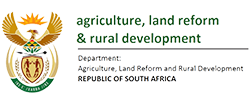Commentary: Market trade for wool amidst COVID-19
By Zosuliwe Kala
South Africa is a vast and beautiful country with a rich history of sheep and has earned the reputation for being one of the most important apparel wool producers in the world. Roughly 90 % of South African wool production is exported to China, Egypt, the Czech Republic, India and Italy, which process wool for the apparel market. However, the high proportion of South African wool exported means that South Africa is more important as an exporter of wool. The 2018/2019 season had many disruptions which affected farmers’ financial positions. The troubles started when, for the first time in 40 years, there was a cancellation of wool sales. This cancellation followed after the foot-and-mouth disease outbreak at the beginning of 2019, which resulted in the suspension of South Africa’s FMD status and hence the subsequent ban on wool exports to China. This meant that South African small-scale wool farmers, particularly those in rural areas, were under stress, coupled with severe drought conditions. Therefore, the cancellation of two August auctions last year was a major setback to wool farmers who were already struggling due to
the drought, as many of them solely rely on auctions for their incomes.
Trade implications of COVID-19 towards South Africa’s wool exports
The South African wool industry suffered some critical blows in 2018/2019 and there are hopes for a better season this year. Early last year, China, which is the major importer of South Africa’s wool, temporarily stopped buying the country’s wool because of a foot-and-mouth disease outbreak in Limpopo. The impact of this ban was immediately felt across the industry and sheep-farming communities of South Africa. The wool industry expected a better season this year without any disruptions, with about 70 % of wool being exported to China in a normal season. Wool exports in 2019/2020 have by comparison been higher than those in 2018/2019 for the same months, until February. It was reported that export sales for February 2020 increased by 31 % as compared to the same period in the previous season. This means that the wool industry was starting to enjoy market benefits. However, the disruptions caused by COVID-19 this year affected the industry and farmers’ incomes as well – this was after President Cyril Ramaphosa announced a lockdown strategy to curb the spread of the disease, resulting in wool auctions being postponed. As a result of COVID-19, exports sales for March 2020 were lower as compared to the same period in the previous season due to the lockdown strategy imposed by the government. At the same time, wool prices were already suppressed weeks before the lockdown, due to fears of potential slowing global demand. The wool market, therefore, had to endure a 12.5 % decline in wool sales. South Africa’s wheat trade in relation to the world.
Conclusion
South Africa, as the largest exporter of raw wool fibres, has a robust interest in maintaining its position in the global markets. However, the huge dependence on the Chinese market is proving to be a challenge for South Africa. Therefore, South Africa should strengthen its efforts to diversify its wool export markets to remain competitive in the medium and long term. Although diversification would be an important route to take, it would be difficult for any country to succeed in the world market without some level of reliance on the Chinese market due to its dominance of the world market for wool products. With that being said, South Africa can build a trade relationship with other markets to which it has potential to export more – for example, countries such as India, Italy, the Czech Republic and Egypt, amongst others. Thus, this will reduce the impact of market failures on the livelihoods and food security of our farmers.

